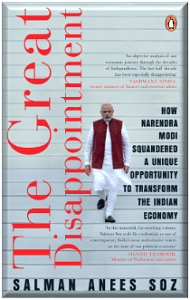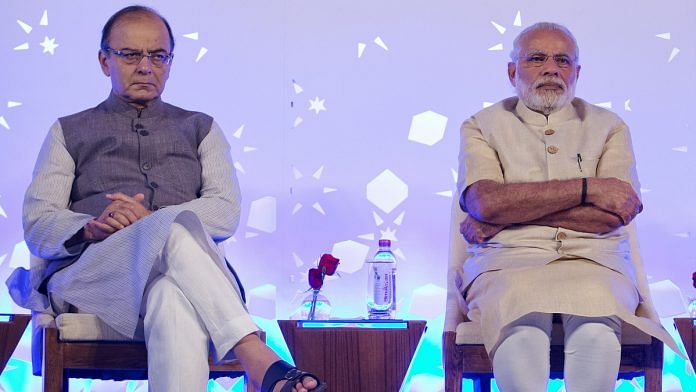Between 2010 and 2030, India’s working-age population is likely to grow by 25 crore. At the same time, the working-age population is likely to decline in advanced economies and in China. This is what a much-anticipated demographic dividend could look like. Policymakers have been gushing about what the future could hold for India. But, herein lies the problem. India is not creating jobs at the scale at which aspirational young Indians are joining the workforce.
The pace of employment generation has steadily decreased over the last few decades. During the period 1983–84 to 1992– 93, employment increased by about 2 per cent per annum. After this, from 1993–94 to 2004–05, it slowed to 1.85 per cent per annum. During this time, the economy grew faster than in the preceding ten-year time frame. From 2004–05, the economy grew at a historically rapid pace but employment growth slowed down further. After a marginal improvement between 2010 and 2012, employment growth declined sharply during the period from 2012 to 2016. According to the Labour Bureau, this decline in employment was perhaps the first such instance since Independence.
Most people in India are aware that each month 10 lakh people join the labour force. What most people do not pay attention to is that actually more people above the age of fourteen could potentially join the labour force to seek employment. However, the reason only 10 lakh young people start looking for work is because India’s labour force participation rate (LFPR) is low by international standards. It is about 54 per cent, while the global standard is around 62 per cent. By this low standard, about 1 crore additional people should be looking for jobs each year. While this shows how many new people are coming into the job market, we also face a stock problem—young people who enter the job market are unable to find jobs.
Another group of young people is marginally employed or underemployed, as the NITI Aayog describes them. Using Labour Bureau data, the CMIE estimated that at the beginning of 2016, there was a stock of 8 crore Indians who were unemployed or marginally employed. CMIE goes on to suggest that after the November 2016 demonetization, the ranks of unemployed grew. This means the jobs crisis may be far more serious than commonly understood.
Also read: Narendra Modi and jobs: It’s all about data, and how it’s calculated
Researcher Radhicka Kapoor reviews data from the Labour Bureau’s Annual Household Employment survey (not to be confused with the bureau’s quarterly employment surveys which are based only on enterprises employing ten or more workers in select sectors) and highlights job-creation problems from a different perspective. Total employment fell from 48.04 crore in 2013–14 to 46.76 crore in 2015–16. Kapoor notes, ‘The only sector to have witnessed a significant increase in employment was wholesale and retail trade where employment increased from 43.7 million to 48.1 million. In the manufacturing sector (both organized and unorganized) employment declined from 51.4 million to 48.1 million over the same time period.’
The data presented above highlights the jobs situation in its totality. However, as alluded to earlier, India’s employment structure skews heavily towards informal jobs. As the World Bank notes in its latest SCD for India, less than a fifth of the workers in India are in salaried jobs. According to the World Bank, ‘India needs to create regular, salaried jobs with growing earnings rather than self-employed ones in order to join the ranks of the global middle class by 2047—the centenary of its Independence.’
It is in this broad context that we should assess Modi’s performance rise. Various accounts indicate that the BJP under PM Modi promised millions of jobs each year. While the Opposition claims that Modi promised 2 crore jobs per year, news reports put the figure at 1 crore. Either way, Modi himself set the expectation of a roaring, job-creating economy. It is for this reason that many government schemes have targeted skill development as a crucial objective. However, despite the government’s claims, the employment story now is no different from the one during the Manmohan Singh government.
An analysis by Bloomberg indicated that while India was growing fast, ‘the link between growth and job creation is weakening’. The main reason for this disconnect, according to research by Azim Premji University, which Bloomberg cites, is that there is a mismatch between skills and available jobs. The analysis indicates that unemployment remains high among young and well-educated Indians. This research also indicated that nearly half of the 46.7 crore workers in 2015 were self- employed, with a third being casual workers, and only 17 per cent were regular salaried workers.
Also read: Jobs, GDP, rules, Modi govt ignored us on everything — expert who quit statistics panel
The failure to create jobs is becoming the biggest political challenge for the Modi government. There are constant reports in the media about the challenging jobs situation in India. The government’s response has been to latch on to questionable data on job creation to argue that India does not have an employment problem. The government jumped on a study by Pulak Ghosh of the IIM Bangalore and Soumya Kanti Ghosh of the State Bank of India, which used Employees’ Provident Fund Organisation (EPFO) to show that India created 55 lakh new jobs each year. EPFO data tracks formal-sector employment, and if the economy was creating 55 lakh new jobs each year in the formal sector, this would represent not only a great political victory for Modi but would also turn conventional wisdom on its head. In a television interview in January 2018, Modi claimed that ‘lies were being spread’ about a lack of jobs in India. Modi went on to say, ‘In one year, EPF (Employment Provident Fund) accounts of 70 lakh youth between the ages of 18 and 25 have been opened.’
This report was debunked by Jairam Ramesh and Praveen Chakravarty who argued in a detailed rebuttal, ‘It doesn’t take much to realise the flaws in this analysis: New 18- to 25-year-old EPFO members do not automatically mean net new jobs in the economy; an informal job that turns formal with an EPFO registration does not mean it is a new job; cherry- picking an EPFO data point and post-demonetisation/Goods and Services Tax (GST) time frames lead to these grossly misleading conclusions.’ Vivek Dehejia seemed to agree with Ramesh and Chakravarty, calling their critique of the Ghosh and Ghosh methodology ‘persuasive’. Dehejia bemoaned the fact that ‘the debate has been twisted by the authors’ untenable and implausible claim that new EPFO registrations, in particular of younger workers, largely represent net new additions to employment’.
For a country that needs to add over 10 lakh jobs each month, it is dispiriting to have top leaders such as the prime minister and the finance minister latch on to such flawed analysis to claim that all is well when a preponderance of the evidence points in the other direction. As Ramesh and Chakravarty concluded in their article, ‘India’s jobs situation is a very grim challenge that must be acknowledged, confronted and for which we must debate solutions. A serious issue such as lack of jobs for millions of youth cannot be wished away by hiding behind misleading data analysis and a media spin.’ I agree with them and not simply because they are my colleagues in the Congress party. With rapid changes in technology and prospects of automation, the jobs challenge will only get more difficult as waves of young people enter the job market in the years to come.
It is my opinion, based on the evidence I have seen, that Modi’s governance has been incremental in nature and, frankly, his accomplishments are far less impressive than most had expected when he assumed office.
Also read: India’s rural employment plan has been giving fewer & fewer jobs to the most deprived
 This excerpt from “The Great Disappointment’ has been published with permission from Penguin Random House India.
This excerpt from “The Great Disappointment’ has been published with permission from Penguin Random House India.







Good article. Unemployment started with modi. Earlier there wasn’t any unemployment in india. Why do you take up two/three issues and try to prove modi is a failure? Are you congress portal?
No need to panic. Modi ji will make india largest exporter of labour to middle East, Europe and Americas. He will have sufficient visits in next 5 years that all IIT graduates, medical professionals, and every variety of labour to be employed in all these countries. This will bring lots of investment and india will become a developed nation in next 5 years. No job crisis..Only Vikas. And they will come to india to vote for modi ji again.
Mr. Aneez .. don’t focus on government job. Government job are for freeloader . Jobs are ample but sorry if u don’t HV skill don’t ask me one. Labour jobs are stolen by Bangladeshi n rohingya . Non of the factory got closed o.. only fake shell company got closed . In last 5/6 year , we have swiggy , zamato , urban clap , big basket , ola,Uber , 1.5 lac people itself employed in mobile manufacturing . Stop population growth and providing 4/5 kid . Or else don’t cry job job job. Try to create job rather than be a naukar .
In India, when people speak about job, they usually mean government job, which is generally felt over 60-70 years to be only position to be held for corruption and no work at all. World has changed. There are no free lunches any more. There are too many jobs in India . People are either not willing to work or they have no skill.
All are clammering for govt.jobs only. Our education scenario has also contributed to this.
Job ‘ a are are a big problem for youth ‘after demonitization the problem worsened. Lot of small businesses ‘ smes ‘ closed. If we see per capita saving dips 7% . Which created lack of purchasing power. Ultimately the slowdown deepens. Very grim situation indeed.
Congress leader raaj mei keisa that, kya sable pass job that ???? Oos waqt toe Recession Bhi Nahi tha but still there was more garibi
When Congi cld not solve the bekari in 60yrs how can anybody think is possible in 5 yes that too wth so much opposition ….. At least Indians r progressing now n we Indians r confident we will be much better with Modiji
Jai Hind
India’s jobs situation is a grim challenge and we must debate solutions. This suggestion is sound and valid by the congress. But offer solutions for a debate. Azim Premji University, is saying that there is a mismatch between skills and available jobs. Many government schemes have targeted skill development. With rapid changes in technology and prospects of automation, the jobs challenge will only get worse is a reality in the years to come. For that to say Modi’s governance and his accomplishments are less impressive and is no different from Manmohan Singh government is ludicrous and exhibits the congress bias.